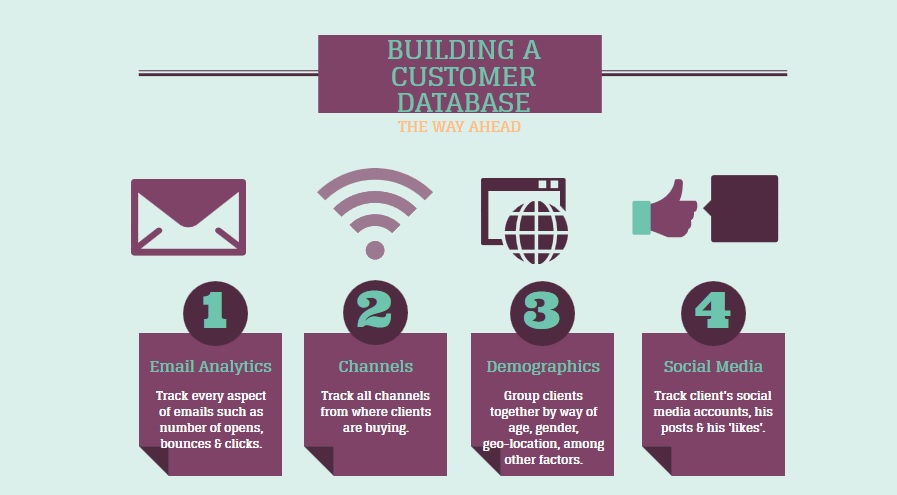How to Build a Customer Profile Database?
As I had promised in my previous post, I start today’s post by explaining how an Enterprise can operationalize analytics. The biggest challenge before any Enterprise, be it a B2B or B2C company, is – getting to know the customer.
This is the first of the six important steps in operationalizing analytics for any company, and often one where many falter.
But before you go down that road, you need to analyze your company’s products or services, to get answers to:
- How will I sell my products/services?
- Who’s interested in buying my products?
- (More importantly) Where do I sell?
- Where are existing customers buying from?
If you think that drawing a customer profile is a simple matter of clubbing clients under generic labels like, ‘Men, aged 30-40 years, or ‘Firm with less than the US $50 million annual revenue’, well, it’s not so.
Such simplistic ‘profiling’ of your customers is not enough. Why? Not all men in a particular age bracket have the same spending power, for example.
Thus, your company cannot afford to draw up “half-baked” inferences about your customers.
Know how to build a Customer Profile Database. Ascertain all your customer touch-points and assimilate the data. Speak to Our Experts.
There’s a simple mantra behind building a customer profile base: draw up as intricate a profile of the customer as possible.
A lot of effort has to be put into understanding customers:
- Ascertain all your customer touch-points and assimilate the data
- Using this data, calculate the value of each customer, i.e. what does he cost your company to acquire and retain, and what kind of revenue does he/she contribute
- Then, profile your customer base to establish the characteristics of your ‘most valuable customers

We, at Express Analytics, for example, deploy a variety of analytical techniques to decipher customer data collected over social media, emails, by geo-location, and across channels and devices, to help Enterprises find out who their customers are, and the value of each.
Social: Social media, we feel, has become one of the most important data sources. Start by appending the Twitter handle, Facebook account name, and WhatsApp account, to every customer’s database account. Then, build in an automated signal that alerts the company when a customer uses certain ‘keywords’. Also, every time a consumer ‘likes’ something on Facebook, it must trigger off an alert. Using a consumer’s social journey, across multiple social networks, over a period of time, a clear image of his/her likes, dislikes, and even spending power, can be ascertained.
Are you ready for your business transformation?
Emails: Email analytics is another valuable source to be used to build a credible customer database.
First, our dashboard tracks every aspect of an email – the number of bounces, the number of emails opened, links clicked on, and the ‘unsubscribe’ behavior.
It is also necessary to integrate data from other email service providers used for email marketing strategy for your customers like MailChimp and SilverPop. Find out which types of emails resonate with a particular recipient by interpreting the email analytics.
Channels: Find out the channels from where customers are buying your product or service.
Channels mean whether customers are using a browser, Twitter or WhatsApp, or email or SMS. Tie in all the data with the customers’ profiles.
Devices: Identify their device preferences whether they are desktop or laptop users mostly on a desk or are they, mobile users.
Desktop, mobile, Android, Windows, the apps they use…and so on.
Operating Systems: The various operating systems used by the customer in the process.
Windows, MAC OS, Unix, Linux, iOS, Android, etc. Each can allow you different levels of personalization and customization to improve the intimacy of the customer with the brand.
Third-Party Integration: Integrate the profile of customers obtained from third-party consumer data collection companies such as Datalogix, and agencies such as Nielsen, Experian, BlueKai, Master Card, and e-commerce engines such as Magento.
Build a Customer Context: Build up a detailed database of your client and capture everything you know about them, including contacts and conversations.
Collect a lead’s life events such as birthdays, marriage anniversaries, divorce, vacation plans, movie outings, weekend plans, wish lists, marital status, kids, zip codes, income bands, degrees, shopping habits, and preferred stores.
Customers may also be grouped by similar psychographic variables such as values, beliefs, buying patterns, and lifestyle choices.
Demographics: This is the simplest step in building a customer base profile.
Customers may be grouped by similar variables, such as age, gender, occupation, education, income levels, geographic location, industry, number of employees, number of years in business, products or services offered, or other defined criteria.
Thus, having successfully built your customer profile database, the next step in operationalizing analytics is – Building a Prospects’ List, which is the subject of my next post.
An Engine That Drives Customer Intelligence
Oyster is not just a customer data platform (CDP). It is the world’s first customer insights platform (CIP). Why? At its core is your customer. Oyster is a “data unifying software.”
Liked This Article?
Gain more insights, case studies, information on our product, customer data platform


No comments yet.